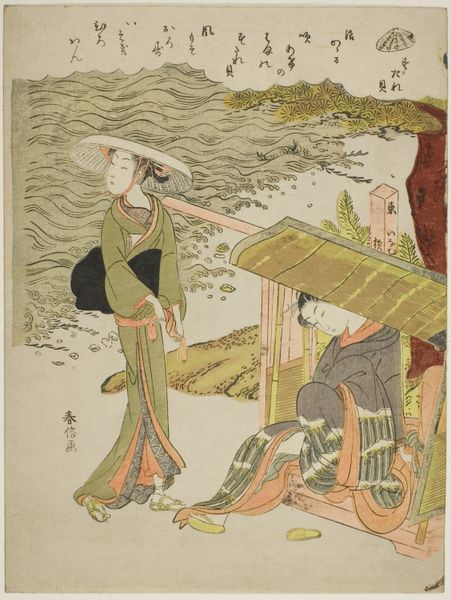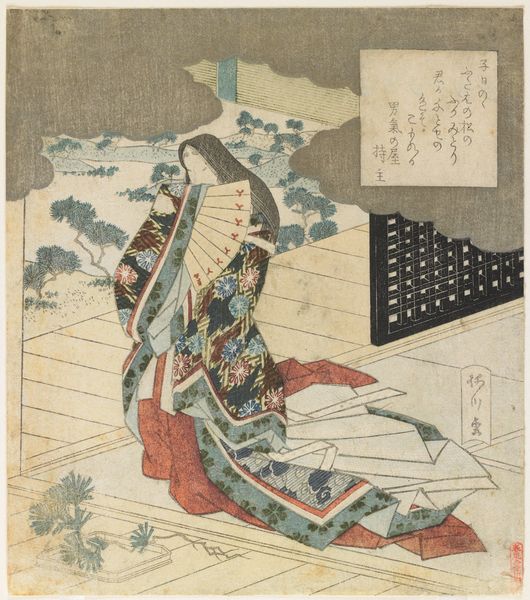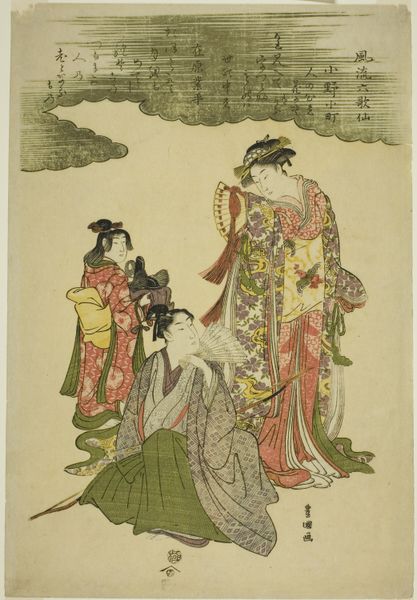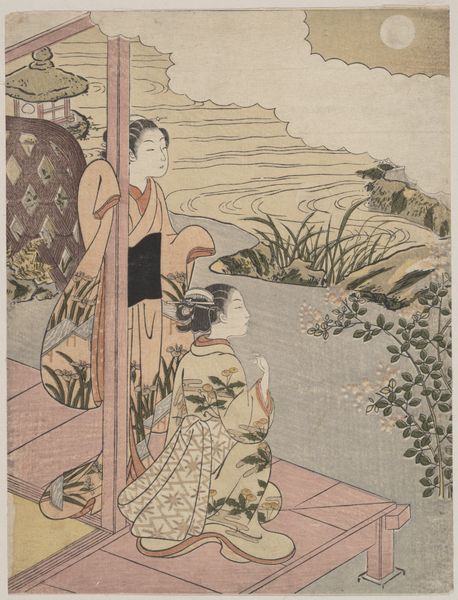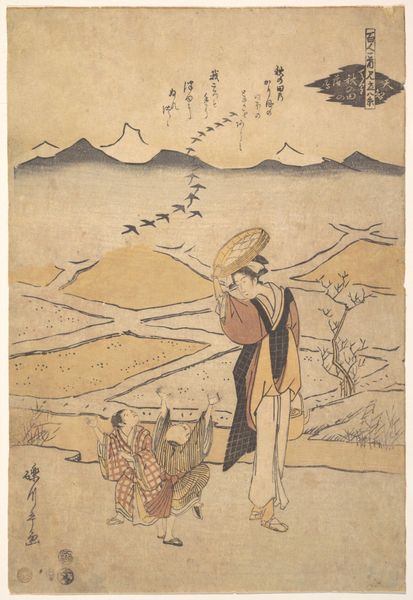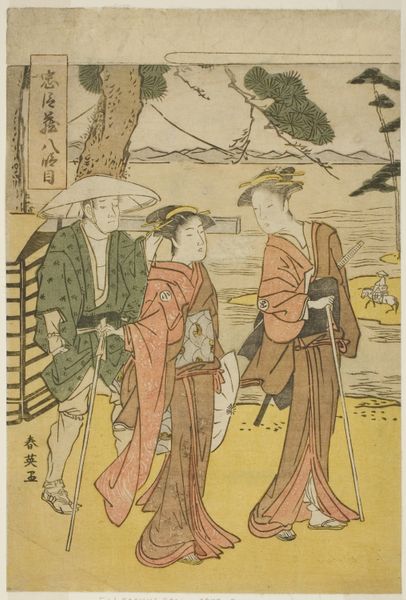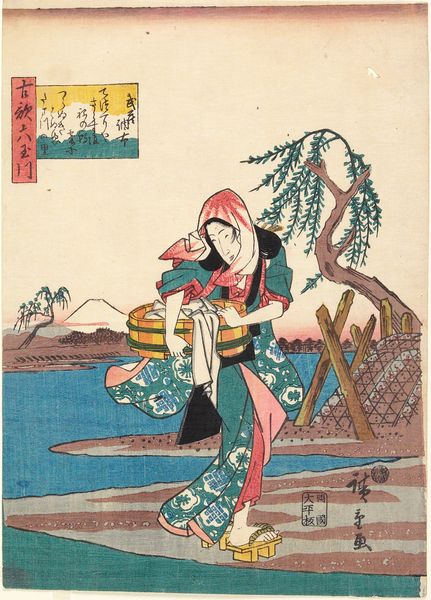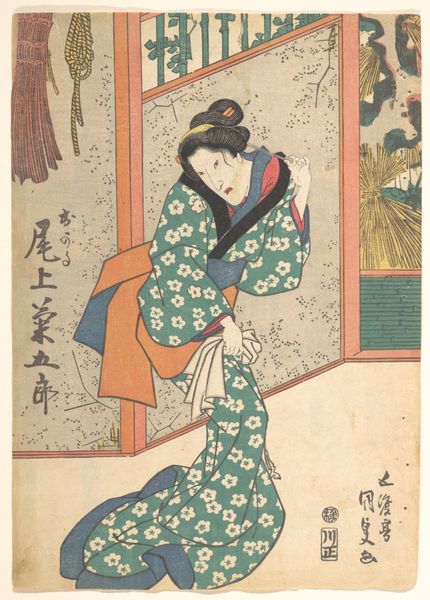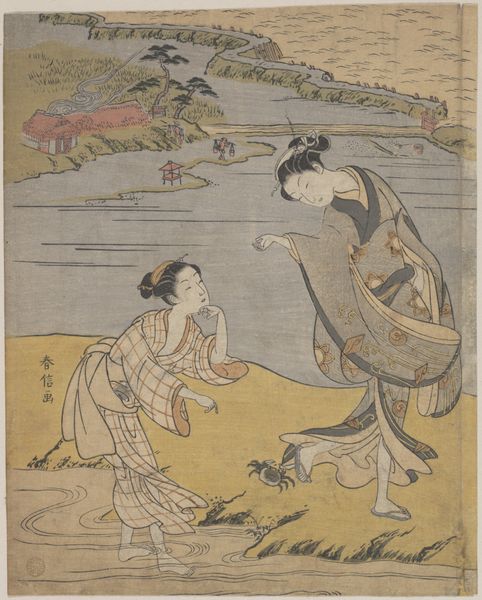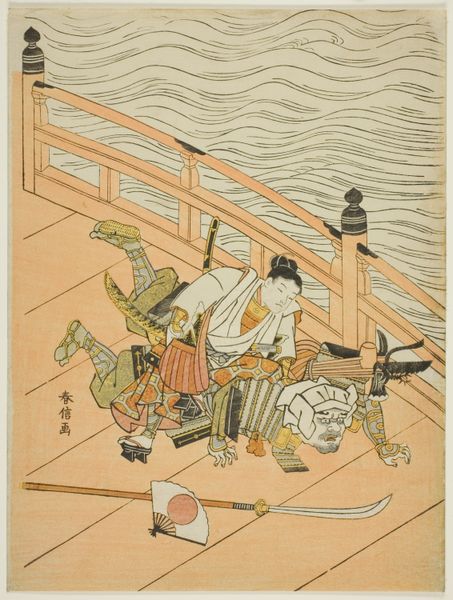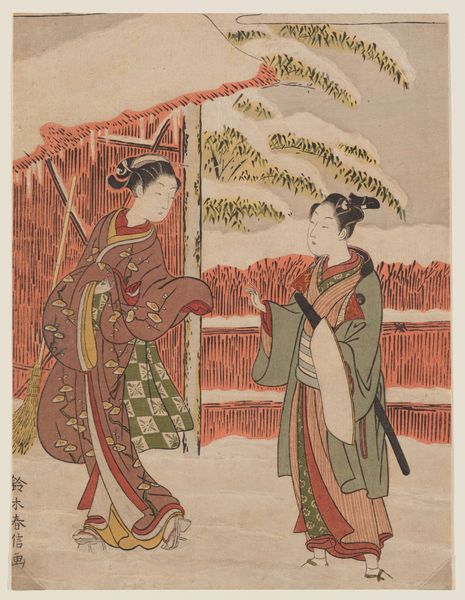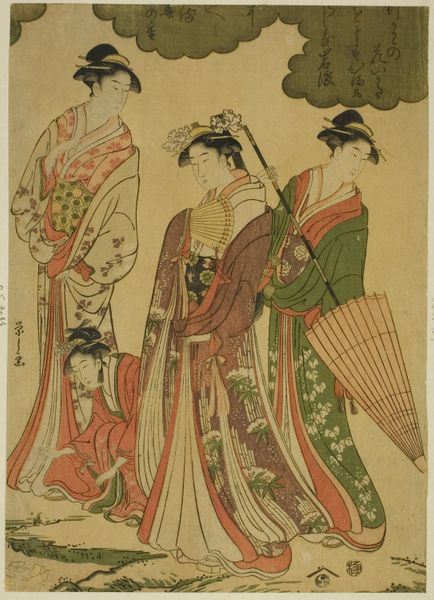
print, woodblock-print
#
portrait
# print
#
asian-art
#
landscape
#
ukiyo-e
#
figuration
#
woodblock-print
#
genre-painting
Dimensions: H. 11 1/4 in. (28.6 cm); W. 8 9/16 in. (21.7 cm)
Copyright: Public Domain
Curator: Here we have "The Curtain Clam," a woodblock print by Suzuki Harunobu, dating from the mid-18th century. Its subdued tones and gentle composition give it a uniquely tranquil aura, wouldn't you agree? Editor: Absolutely. The softness of the colors does contribute to that sense of peace. It's interesting to note how genre scenes like this offer a glimpse into the leisure and cultural practices during the Edo period. Consider the status and gender roles inscribed within the very act of portraying these women. Curator: Good point. The technical aspects of production are intriguing here as well. Creating these subtle gradations of color in a woodblock print necessitated precise carving, registration and layering of inks—requiring the skills of artists, carvers, printers, and publishers all working together. Editor: Exactly. The production process in turn supported a whole economy of craftspeople, bookshops, and patrons who reproduced and consumed Ukiyo-e prints widely. The images reflect popular pastimes like outings to admire blossoms or visit temples. How do you see the clam functioning as metaphor here? Curator: Well, you know, seeing that the shape evokes domestic interiors, the reference to 'curtain clam' possibly refers to female reclusiveness in some sense. But on the other hand, there's also the suggestion of an oyster producing a pearl of feminine beauty… Editor: Perhaps. I am more interested in reading it as an allusion to female figures within confined spaces—the social constrictions placed on women which contrast sharply with the idyllic settings and themes of beauty. Their economic position and dependency becomes much clearer then. Curator: It is a point to ponder. And in many ways, art historical studies often miss the forest for the trees in this manner! Looking closely at the production involved enables broader interpretation of how art serves society at large. Editor: Agreed. Considering these multiple perspectives deepens our understanding of how art both reflects and shapes the society it emerges from, prompting critical dialogue and awareness, even now. Curator: Definitely a dialogue worth continuing long after our audio tour concludes. Editor: Indeed. Hopefully it prompts everyone to contemplate the complexities behind the artwork that are usually overshadowed in popular memory.
Comments
No comments
Be the first to comment and join the conversation on the ultimate creative platform.
